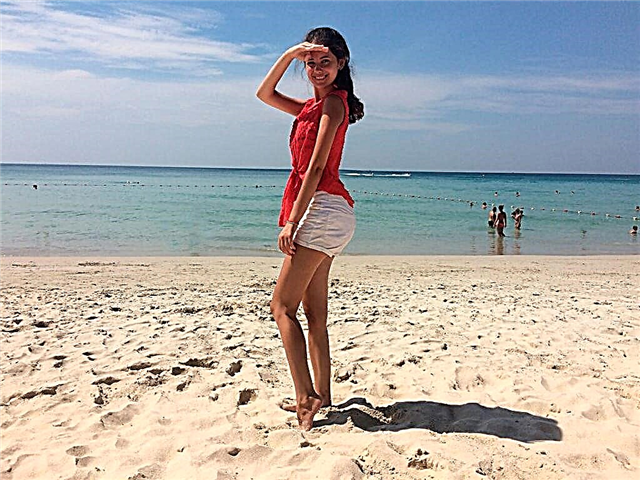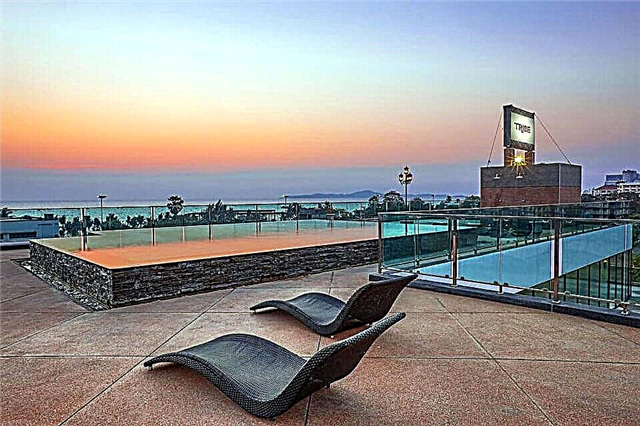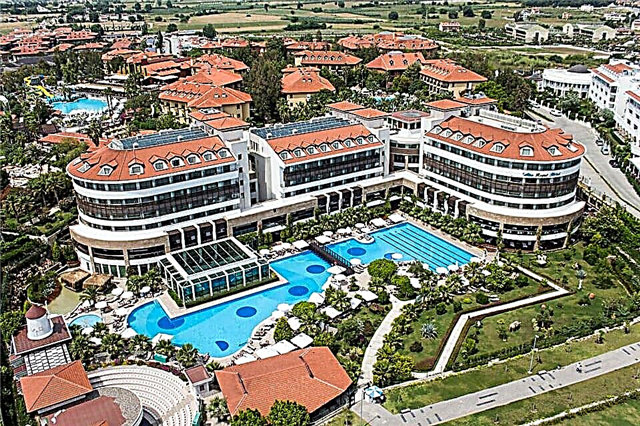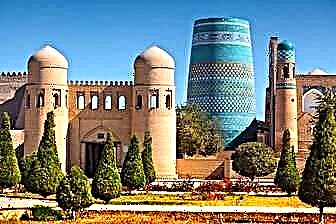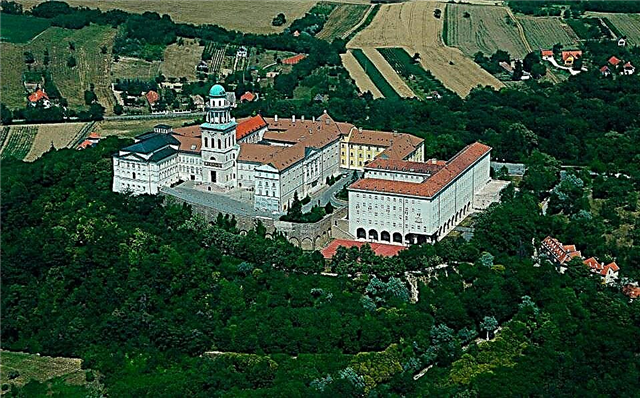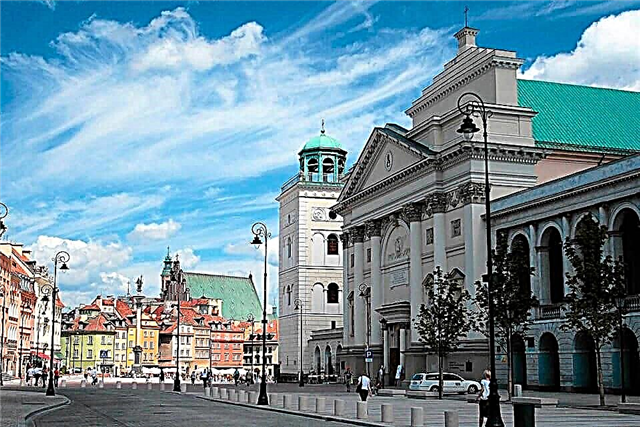A city with a centuries-old culture, amazing history, extraordinary color and enchanting atmosphere - Warsaw, like many other European cities, is multifaceted. The city boasts a rich excursion program, places for youth recreation and entertainment, as well as unique monuments of history and architecture. The city of legends and amazing stories. A whole week will not be enough for an inquisitive tourist to get around all the sights of Warsaw. Let's try to describe just a few of them that deserve special attention.
Column of Sigismund III

Warsaw starts with the old city, where the atmosphere of comfort is emphasized by low-rise buildings and a cobblestone pavement. The most important square is Palace Square. In its center stands a column with a statue of the Polish king Sigismund III. The Mariana Column was the prototype. Cast from bronze in 1643, but the granite pillar, destroyed by the Nazis in 1945, was rebuilt in 1949 from a granite monolith mined in Silesia. In 1771, during his travels across Europe, Peter I was struck by the unique architectural monument and immediately wanted to see this masterpiece in his state. But in Poland there was no person who would undertake the transportation of such a huge monument.
The Royal Castle

Along the square is the Royal Castle, originally built by King Sigismund III at the end of the 16th century. In 1945 it was mined and blown up. For a long time the fate of this place was decided, until in 1971 it was decided to restore the lost heritage. Now a museum has been created here, where you can see completely restored rooms and interiors. Many paintings, including the originals of Rembrandt, attract art lovers here. The Throne Room, the Marble Room, the Assembly Hall are decorated with fine stucco gilding, original and restored artworks.
A unique valuable relic of the Royal Palace Museum - Stockholm Roll - an artistic canvas with a length of more than 15 m, depicting a solemn marriage procession in 1605 of King Sigismund III and Constance, Archduchess. There are collections of tapestries, carpets, furniture from the time of St. Stanislav; there is a richest collection of watches for various purposes; interesting examples of products made of porcelain, ceramics, bronze and crystal. No less valuable exhibits are documents from the royal personal archives. Every day at 11.15 a trumpet signal sounds from the palace tower, announcing the time.
St. John's Cathedral

Nearby is the Cathedral of St. John - the main temple. The Gothic appearance of this oldest temple was recreated by craftsmen after the war. Restored according to evidence, the interior is sublimely light, unobtrusive and does not interfere with communication with God. The most honorable burial vault in Poland is located here. The temple is functioning, admission is free and there are masses every day.
Conceived during the construction (late 14th century) as the burial vault of noble Polish princes, from the 17th century the cathedral became a place of coronation, for which a special corridor was built between the Royal Palace and the church. Within its medieval walls, the stronghold of Catholicism, several Polish monarchs were crowned for power and received their last refuge, including the last king of Poland - Stanislaw Poniatowski and representatives of other noble Poles.
Externally, the cathedral (this status was assigned to it at the end of the 18th century) looks like a truly Gothic building, but the interior decoration is made in the Baroque style: the extraordinary beauty of the ceiling frescoes with gilding, the picturesque canvases of the altar, the Borichko chapel create a majestically beautiful picture of the decoration.
Address: Kanonia, 6.
Mermaid fountain and sculpture

Not far from the Palace Square is the famous Market Square with a sculpture of the Mermaid in the center of the fountain. Each side of this historic site bears the name of a famous resident: Jan Deckert, Frantisek Barssa, Hugo Kollontai, Ignacy Zakrzewski.
The square is surrounded by buildings, each of which has its own interesting history from ancient times. Most of them have also been restored, but some are almost intact. There are many cafes on the square, where at reasonable prices you can get acquainted with the peculiarities of Polish cuisine, in which dumplings with various fillings are called pies, and soup is served without bread, but in bread instead of a plate.
For a long time, the Market Square was the central place of trade, and now shops with products from antiques to food and clothing attract lovers of interesting shopping here. In winter, an ice rink is organized on the square, where people flock to ice skating. In the evening, in the light of various Christmas illumination, many residents and guests stroll through the square and nearby streets.
Medieval dungeons

The cellars in the Old City turned out to be the most surviving places after the war. Their restoration turned out to be quite interesting. In one of them, during the restoration work, a huge treasure with coins of the 17th century was found. Of the five cellars where exhibitions or cultural events are currently taking place, you can choose one or two, or visit all of them. There is a special route for this.
Royal Route

Royal Route - Several streets linking three residences that were once home to royal families. But not only this is famous for the most beautiful streets. In summer, this path is buried in flowers that are planted in beautiful baskets throughout. The buildings on the sides seem to have come out of the picture. Everything is clean and well maintained. The wide pedestrian part and the narrow carriageway make it convenient for walking, as there is little car traffic here, and on weekends the streets are completely blocked for it.
Royal Lazienki

The Royal Route, which turns into the Uyadzovsky Alleys, leads the traveler to the Royal Lazienki. This is a palace and park ensemble on a huge territory, decorated in the Baroque style. It was built in the 17th century for Hetman Stanislav Irakli Lubomirsky. Peacocks are walking along the manicured lawns that are located around the palace buildings. The palace surrounded by lakes is called the palace on the water. Later it was acquired by King Stanislaw August Poniatowski, who made it his summer residence.
Old city

This area of the capital, founded at the junction of the 13-14 centuries, is still the center of the cultural and political life of the state. Almost everything that was created in it over the past centuries was destroyed by the military actions of 1944. There are no completely old buildings left here, but the Poles have lovingly restored many sights from the ruins.
Wilanow Palace

Royal residence, built at the end of the 17th century. for Jan Sobieski's family, the best-preserved and most famous landmark. The majestic architectural suite is surrounded by a picturesque garden, the palace itself is bordered by the green velvet of the lawn, on which solemn events take place. In the depths of the monumental building, on the initiative of Stanislav Potocki, the first Polish museum was opened in 1805. Valuable museum exhibits plundered by the invaders were fully returned, and the museum's expositions were restored. Now the Wilanow Palace is actively visited by tourists as an interesting historical site and an ancient masterpiece of architecture.
Address: st. Stanislav Kostka Potocki, 10/16.
Krakowskie Przedmiecie

This wide promenade with a meaningful name can be called Warsaw Broadway, where only public transport and taxis are allowed. It originates from the Castle Square and stretches towards Krakow.Here you will not be able to be an indifferent contemplator: palaces, churches and magnificent monuments will make you wonder and admire the irresistible view, and will freeze with amazement and delight in front of their beauty.
A stunning impression is made by the Church of the Visitors (Church of the Guardianship of St. Joseph), named by analogy with the women's Catholic order. The beautiful, cream-colored Rococo building was rebuilt on the site of a burnt wooden church (1656) in the first half of the 18th century. The best architects and sculptors of Poland have participated in the creation of a true masterpiece of architecture.
The buildings of the University, the Academy of Fine Arts, the Bristol and Evropeisky hotels are no less beautiful. It is impossible to pass by the majestic monuments to Yu. Ponyatovsky, A. Mitskevich, Copernicus.
Address: Krakowskie Przedmiescie Ave.
Historical Museum

The relatively young museum (1936) is located in a row of old buildings (N 28-42) with medieval facades with an abundance of characteristic narrow windows, arched entrances, numerous turrets and domes on the roofs. The museum's expositions illustrate the history of the city's development over seven centuries through antiquities, through the things of famous citizens, relics and rarities of all times.
Three buildings out of 8 are dedicated to the Middle Ages, represented by valuable archaeological finds, paintings, sculptures, icons and other exhibits. 5 buildings contain expositions detailing the history of the city of the 17th-21st centuries. They clearly demonstrate all the wars of that time that fell to the lot of the people of Warsaw; liberation struggle for independence, religion, culture and art.
The museum is divided into departments, each of which is essentially a mini-museum: named after Lesnevskaya, Palmyra Memorial, Warsaw Book Printing, Field Ordinary School, etc. It has its own cinema, where documentaries in many European languages are shown. Large-scale exhibitions provide a complete picture of the history of the Polish capital.
Address: Market (Castle) pl.
Frederic Chopin Museum

It is located in the same beautiful, light baroque building, like the music of the great composer, the talented son of the Earth. The Poles took the magnificent castle of the princes of Ostrog for his museum, when the question of placing the collection of Chopin relics, collected by the staff of the institute of the same name, was ripe. Relatives and friends of the maestro donated many manuscripts of immortal works, letters, autographed postcards, books.
Now in the museum there is a grand piano, the keys of which were touched by the hands of the genius of music; many personal belongings, household items and leisure items. Chopin's death masks and a unique cast of the composer's hand are real relics. In addition to traditional expositions, it has multimedia, equipped with tactile screens, the right to use of which is given by an electronic ticket. Holders of such tickets can listen to any work and commentary on it in many languages.
Fifteen exposition rooms familiarize those present in detail with the life of the master of classical music, with his surroundings, with the atmosphere of the era in which he worked. Entering the black Hall of Death, everyone experiences a feeling of light sadness and grateful love for the great Chopin.
Address: st. Okolnik, 1
National Museum of Warsaw

It is difficult to call this huge repository of exhibits in one word "museum" - it is a complex of museums, collected under one roof of a building in the Art Nouveau style. It is located in the busiest part of the Polish capital - next to the Poniatowski Bridge and de Gaulle's ring square. The National Museum grew out of the Museum of Fine Arts, founded in 1862.
For him, so many exhibits were collected from various areas of arts and peoples from antiquity to modern times that they decided to assign the status of the National Museum to the museum. Its expositions include over 800 thousand objects of painting, sculpture, jewelry and applied arts, photography, numismatics, woodcarving, bone and fabric.
Priceless rarities - paintings by Polish artists A. Gerynsky "Vase for oranges" and A. Bilinskaya "Negro woman", who returned here from Germany after the war. There is state-of-the-art diode lighting, which allows you to present every picture in the smallest detail. Visitors to the museum can relax in the charming courtyard of Lorentz among the fountains on benches and sun loungers.
Address: Jerusalem Alleys, 3.
Old Town Market Square

As in any other ancient city, it has its own market square, which was once the center of the beautiful Polish capital. It is surrounded by old houses with whimsical facades. It is always crowded here: artists paint portraits of passers-by and sell their paintings, young musicians play instruments, coachmen wait for riders, and tourists look around in search of a bright shot.
A guide to the Polish capital can tell an amazing story about the patroness of the city - Sirena, whose face is depicted on the coat of arms of the ancient city. Once she was a young and beautiful girl who sang songs to fishermen. She sailed from the Baltic Sea and stayed to live in a small village, which later turned into a majestic city. But one day a greedy merchant put her in a cage and made her sing. Local residents, having learned about the trouble, freed the girl, and since then she has been protecting the city from misfortunes.
There are many cafes and restaurants, brand shops and souvenir shops on the Old Town Market Square. Going here, you should take with you a sufficient amount so as not to leave anyone without a souvenir.
Castle Square

Castle Square is one of the most beautiful places in all of Europe. The eastern part of the historic center is located at the Royal Castle. Once there was a wooden fortress, on the site of which a palace was later erected. It is from this place that you should start your acquaintance with the Old Town. There is another unique attraction on the Castle Square - the Shlyakhetskie Gates with a clock tower.
Not far from them is the oldest temple in the city - the Cathedral of St. John. The war years became the turning point for the square. After a grandiose restoration in 1971, the historic center has again become popular not only among locals, but also among tourists. It is worth mentioning that the heart of the Polish capital has occupied an honorable place in the UNESCO World Heritage List since 1980.
Belvedere Palace

The grandiose Baroque building is located almost in the very center of the Polish capital, on the Belvedere Alley. The Belvedere Palace stands on a hill with a picturesque view of the artificial lake. The building was built back in 1822. His project was carried out by the architect Jakub Kubitsky. The majestic structure has a rich history. The first palace in the same place appeared back in 1662.
The building was specially built for the wife of the Lithuanian Chancellor Christopher Sigismund Pats. A few years later, the palace passed into the possession of Stanislav Poniatovsky, who housed a faience factory in the building. Then the castle was owned by Onufry Kitsky, a few years later the building became the property of his daughter Theresia. At one time, the Russian prince Konstantin Pavlovich lived here. Throughout its history, the Belvedere has been the property of many great people. And now the castle is the residence of the Polish president.
Monument to Frederic Chopin

Poland has given the world a lot. In addition to unique cultural and historical sights, this country has given the world many cult figures and celebrities who have made an invaluable contribution to the World Heritage. One of these is Frederic Chopin. Despite the fact that his father was French, and the greatest Polish composer was buried in the Pere Lachaise cemetery (Paris), his heart in the literal sense of the word belongs forever to Warsaw.The fact is that after death it was transported and buried in a column of the Church of the Holy Cross.
The Frederic Chopin monument is one of the most recognizable. In azienki Park, this is the main attraction that attracts crowds of tourists from all over the world. The monument to the great composer was erected back in 1926, but during the Second World War nothing remained of it. The copy was restored only in 1958. In summer, you can hear classical music here. This tradition has been observed for over 60 years.
Monument to Nicolaus Copernicus

The sculpture, erected in honor of the greatest scientist of all time, was created by the Danish master - Bertel Thorvaldsen. In 1822, the monument was cast in bronze and installed in its rightful place in 1830. The sculpture was erected at the expense of the Catholic priest Stanislav Stashitsa. The astronomer holds an armillary sphere in his left hand, and a compass in his right. On the monument there are inscriptions in Latin: "Nicholas Copernicus grateful homeland", "Nicholas Copernicus compatriots."
During World War II, the German occupiers replaced them with “Nicolaus Copernicus of the German nation”. In February 1942, Polish soldiers tore down these inscriptions. A little later, the bronze sculpture was stolen by fascist troops for the purpose of further melting down. However, Polish soldiers were able to save the monument and returned it to their homeland. The unveiling of the restored monument took place in 1949. There are copies of the monument to Nicolaus Copernicus in Chicago and Montreal.
Monument to the heroes of the ghetto

World War II raged across many post-Soviet countries. She did not bypass Poland either. In the capital of the state there are many monuments that are an echo of the war and each time remind residents of the city and tourists about that terrible time that took millions of lives with it.
One of them is the Monument to the Heroes of the Ghetto. In 1940, literally immediately after Germany began its occupation of Poland, several areas were declared a special zone in which Jews lived.
In October of the same year, the Warsaw Ghetto was created, where more than 500 thousand Jews were herded. So the concentration camp became the largest in Europe. In 1942, people from the Warsaw ghetto began to be taken to the Treblinka extermination camp. A year later, after an armed uprising, the Nazis literally razed the area to the ground. Now, on the square between Levartovsky, Anelevich, Karmelitskaya and Zamenhof streets, a Monument to the Heroes of the Ghetto has been erected.
The 11-meter-high sculpture was discovered in 1948. The place was not chosen by chance, because it was at this place that the first armed clash took place during the 1943 uprising.
Monument to the Young Rebel

A small figurine of a child among the ruins squeezes his heart and reminds of that terrible time when women and children were forced to take up machine guns and fight for their homeland. The Monument to the Young Rebel is located on Podval Street in the Old Town, the walls of which were almost completely destroyed during the Second World War. Today, the medieval citadel has been restored, but its fragments that survived the bombing have become part of the compositions for several memorial complexes.
So, the ruins of one of the towers turned into a background for the monument to the Young Rebel. Jerzy Jarnuszkiewicz became the author of the sculptural composition. The creation of the monument was inspired by teenagers and children who fought with German soldiers during the Warsaw Uprising of 1943, when the Old Town was almost completely razed to the ground.
This tiny sculpture had a real prototype - a nurse's son who helped the rebels. Like many other children, the boy acted as a liaison officer. The young warrior died, like most of the other participants in the military resistance. Today it is one of the popular attractions that testifies to the terrible grief that touched every Soviet family.
Palace "Under the badge"

It was built in 1720 - 1730 near the Royal Palace. Construction work was carried out according to the design of the famous architect Yakub Fontan. The palace received such a creative name thanks to the copper roof, which was in the first half of the 18th century. Initially, on the territory of the palace "Under the badge" there was an ordinary house that belonged to the court blacksmith who served Jan Casimir. Then Jerzy Lubomirski and Stanislav Poniatowski owned the house.
After the Second World War, the appearance of the building underwent some changes. However, in general, the main building has retained its original appearance. The cultural heritage of the city after 1989 became part of the Royal Palace. In 2008, a large-scale reconstruction of the palace "Under the Badge" was carried out. Now it is a museum, which displays a variety of art objects, as well as various antique exhibits.
Multimedia Fountain Park

The Vistula embankment is a favorite place for tourists. But not only because it is very beautiful here. The multimedia Fountain Park works on the embankment in the warm season. The tourist attraction was opened in May 2011. The park is located not far from the Old Town, on the Vistula embankment.
The sight that opens in front of tourists will not leave anyone indifferent: more than 30 thousand liters per minute are emitted by 367 nozzles, as well as incredibly beautiful lighting.
To create fountains, designers use a little more than 300 LED-type reflectors. Tourists should linger near the fountains, because at a certain time bizarre animations emerge from the water and illumination, which will not leave indifferent any spectator. All this spectacle is accompanied by music of various genres. Steam operates from May to September, every Friday or Saturday. The rest of the time, the fountains work without musical and light accompaniment.
Zoo

Going on a trip to the Polish capital, one cannot but look into the zoo. It should be said right away that this place is not simple, with a rich and unique history. It is always crowded here - not only foreign tourists, but also local residents like to visit the poo. The area of the park is huge. Lions live here. rhinos, elephants, lynxes. camels, bears, etc. Squirrels run freely around the zoo, so tourists can freely treat small rodents with nuts.
If you went to the zoo with a child, take a trolley at the entrance, where you can put the toddler tired of the walk. Trust me, you will not regret this decision. The zoo does not always work at the same time. If the weather is stable, tickets are sold from 9:00 to 16:00, although the attraction is open until 17:00. The fact is that 60 minutes is not enough to get around even most of the zoo. Please note that a child under 12 years old will not be allowed in without an adult.
Lazienki Park

If you have free time and you are familiar with many sights, take a look also at the azienki Park. You can immediately get your camera ready, because from the very first steps tourists are greeted with unusual monuments and vivid landscapes. To the left of the central entrance to the park there is a monument to Marshal Pilsudski, to the right - Belvedere Palace. A few meters later, a truly rare exhibit appears - a retro car.
Having looked enough at the old vehicle, you can walk to the monument to Frederic Chopin. Immediately behind it is the entrance to the Royal Theater and the ancient conservatory. Paid entrance. The main attraction of the park is the Palace on the Water. Peacocks, walking freely, give it a special pathos. The Roman Theater is located next to the palace.
The highlight of the park is the Chinese Garden, which is located a little away from the tourist trails. It is not difficult to find it - you need to stand with your back to the White House and head into the depths of the park along the path.
House of Keret

The narrowest house in the world or Keret house. This building is located between two houses. Its width at its narrowest point is only 91 cm.The Kerete house was not originally created for a large family. The building was designed for one unpretentious person. There is not enough space to accommodate an impressive kitchen or bedroom set. There are no free squares for a spacious bath and living room.
The Keret House was conceived as an art project. But I liked the Israeli writer and director Edgar Keret, who often comes for work. The area of the house is only 46 sq. m., which are distributed between two floors. Cooking meals, partying with friends - all of this is unlikely in the house, since there is only enough space for one person.
Lazienki Palace

Once it was the residence of the Polish king Stanislav August Poniatowski. Then the "Palace of Water" was located far from the Polish capital. Today, the park with an area of 74 hectares is spread not far from the historical center. The exquisite 17th century bath was rebuilt by the Italian architect Dominic Merlini.
Other objects surrounding the Lazienki Palace are the White House, greenhouses, paths and canals, which together form a magnificent composition, which is a harmonious mixture of classical Baroque architecture and landscape design. This park is very popular with the locals.
The palace itself surprises with its interior decoration. Solomon's Hall, a ballroom, as well as an art gallery, which displays about 2.5 thousand works of art.
Warsaw Citadel

The Russian fortress of the 19th century or the Warsaw citadel is a unique landmark of the Polish capital, which was built by order of Nicholas I immediately after the Polish uprising of 1830. The gate overlooking the river was called the "Gate of Death", since it was in this place that the death sentences were carried out.
Today it is a museum that contains an impressive piece of the history of the Polish state. Foreign tourists are strongly advised to visit “Block No. 10”, where the chambers of political prisoners have been preserved. There is also a wagon in which the exiles were transported. At one time, German invaders settled here, who prevented the rebels from joining with another part of the Polish army.
In 1963, a military history museum was opened on the territory of the citadel, which has preserved unique expositions reflecting the difficult history of the Polish state.
Church of St. John the Baptist

This is the oldest Catholic church in the city. The Church of St. John the Baptist saw history in the truest sense of the word: here a dispute took place between the Polish king and the knights-crusaders, Stanislav Leszczynski and Stanislav August Poniatowski were crowned, a member of the Seimas took the oath, etc.
Inside the cathedral are buried famous personalities who made an invaluable contribution to the development of Polish culture and the state itself. In the church there are magnificent tombs of Ignacy Jan Paderewski, Heinrich Sinkevich and the first president of Poland - Gabriel Narutovich.
A striking attraction of the cathedral itself is a huge wooden crucifix, brought back at the beginning of the 16th century from Nuremberg. You can talk about the church endlessly, but it is better to cross the threshold and personally touch the shrine. By the way, every summer a concert of organ music takes place in the cathedral.
Church of the Holy Cross

One of the oldest Catholic churches in the Polish state is located in the Krakowski suburb. This is one of the most interesting religious monuments in Europe. The fact is that the Church of the Holy Cross originally belonged to the Lazarists - an ancient Catholic order. Eminent architects and architects took part in the construction of the church.
For example, the project was developed by Josef Shimon Belloto. And now the walls of the church are guarded by the ashes and peace of the great men of Poland, who made history, defended independence and proclaimed the Polish state. At the entrance to the shrine stands a statue of Jesus, who bowed under the weight of the cross.
The temple was seriously damaged during the Second World War. The Germans almost took the statue away, but got rid of it along the way. The fascists mercilessly destroyed the magnificent altars and priceless paintings. Now completely restored and renovated. Construction work ended only in 2004. The church is the greatest value of the Polish state.
St. Casimir's Church

The majestic building of the Catholic Church was erected in 1688. Built by order of Jan Sebieski, St. Casimir's Church stands proudly above the historic city center. Tilman Gamerski is an architect who built a Catholic church in honor of the victory over Vienna. The Catholic temple was built in the style of an early form of classicism, based on strict observance of symmetry.
In wartime, the church served as a hospital. The monks did not immediately allow the civilians to place the wounded rebels within the walls of the temple. But in August 1944 they did it. For which they paid with the bombing. As a result, the building was completely destroyed. The restoration of the temple began only in 1948. It took 4 years to build a new church. The remains of Jan Sobieski's daughter, Maria Carolina, lie within the walls of the Catholic church.
St. Anne's Church

This amazing 15th century building is located in the Old Town, at the intersection of Krakowskie Przedmiescie, Palace and Castle Square streets. The observation deck offers a breathtaking view of the heart of Warsaw. The history of the castle dates back to the 15th century, when a new Catholic church was built on the site of a burned-down monastery for the Franciscans. It happened thanks to Princess Anna Radziwil.
It was rebuilt several times, architectural styles were changed. But one thing remained unchanged - the tombstone of the princess is still located in the building of the Catholic Church of St. Anne. During the Second World War, the church partially survived. Now tourists and locals are happy to come to church services and enjoy the magnificent view from the observation deck. It is worth warning that the observation deck may be closed in bad weather.
Ujazdowski castle

It was originally the castle of King Augustus II. A little later, the building was abandoned and in its place Sigismund III Vasa built a manor house for the future king. Then Stanislav August Poniatovsky owned the palace. During this time, the castle kept great works of art within its walls. During the Second World War, the historic building was seriously damaged, and its ruins were completely demolished in 195.
And only in 175, historians, together with the architect Pyotr Begansky, managed to completely restore the Ujazdowski castle. Now it houses the Center for Contemporary Art, which hosts various exhibitions, concerts and educational seminars. The director of the center is the Italian Fabio Cavalucci. Near the palace there are places for recreation, cafes and restaurants, as well as a dance floor. You cannot drive up to the castle by car, as the place has acquired an ecological character.
Warsaw Uprising Museum

Dedicated to the tragic events of 1943, when the inhabitants of the city attempted to liberate the Polish capital from the German invaders. For 63 days, the Polish rebels fought for the freedom and life of their compatriots. As a result, they were defeated. During this time, more than 200 thousand people died. Immediately after the bloody events, the city was almost completely destroyed.
Museum expositions are located on 4 floors. In total, there are about 750 exhibits - objects that reflect the events of 1943. The museum will be interesting for both adults and children. The highlight of the exhibition is a 3D film about Warsaw. The film was based on 600 images taken during the war years.In this short time (about 5 minutes), you can feel what no book, no detailed description, no documentary film will convey.
Despite the fact that a large number of tourists and locals strive to get to the museum, be sure to take the time to visit this attraction.
Copernicus Science Center

A huge building rises on the banks of the Vistula. The Copernicus Center is an interactive Science Museum that every tourist should visit. There are exhibitions here that will be interesting not only for children, but also for adults. The museum was opened in 2010. There are several permanent compositions in the Copernicus Center. There are own laboratories, where scientific experiments are carried out, a high voltage theater, a robot theater and an interactive exhibition.
To create unusual exhibitions, scientists from around the world have created exhibits that give the museum special value. For the smallest excursionists the exposition "Bzzz" has been created, in the gallery "Regeneration" you can get acquainted with the secrets of the creation of the world. In addition, there is a planetarium in the Copernicus Center, where they show colorful and fascinating films about science. The museum is open from Tuesday to Sunday.
Museum of Caricature. Eric Lipiński

The original Polish artist and public figure Erik Lipinski (Lipinski) entered the history of European culture not only as the author of caricatures. His versatile skill is admirable in the age of computer graphics. The cartoonist was equally masterful with a brush and a pen, created paintings, essays, decorated the scenery for performances, worked as an editor of a satirical publication.
During the Second World War, he forged documents for Jewish families, thereby saving children and adults from destruction, after his arrest, he miraculously survived in two prisons and Auschwitz. Later Lipinskiy was awarded the honorary title "Righteous Among the Nations", took an active part in the political life of Poland. In the 70s, the artist organized a caricature museum in the house, which is part of the architectural complex of the primate's palace.
Once in the museum building, erected approximately in the 18th century, there was a greenhouse and rooms for a gardener. The art object at the time of its opening was considered the only one in Europe. Today, its funds contain 25 thousand works by Polish and foreign authors: graphics, paintings, sculptures. Among the exhibits there are rarities of the 18th century and light, graceful, "full of genius negligence" works of the founder of the museum.




